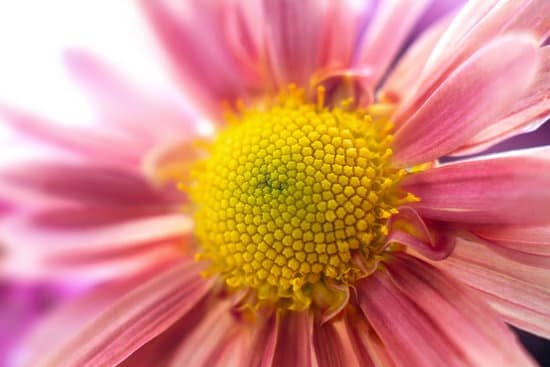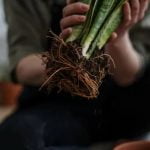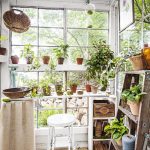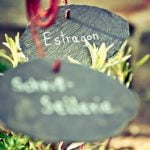Potted plant landscape ideas are a fantastic way to add beauty, color, and texture to your outdoor space. Whether you have a spacious garden or a small balcony, potted plants can transform any area into a lush and inviting oasis. In this article, we will explore the many ways in which potted plants can be used to enhance your landscape design, from choosing the right plants to creative placement and maintenance tips.
When it comes to choosing the right potted plants for your landscape, there are several factors to consider. From the size and shape of the containers to the specific environmental conditions of your outdoor space, finding the perfect plants can make all the difference. In this section, we will provide valuable tips and suggestions for selecting the best potted plants for your needs, whether you are looking for low-maintenance options or unique specimens that make a statement.
Creative placement of potted plants can maximize their impact on your outdoor space, creating visual interest and focal points that draw the eye. By strategically arranging containers and varying their heights and textures, you can create dynamic landscapes that are both visually stunning and functional. We will delve into various placement ideas and techniques that will help you make the most of your potted plant landscape design.
Choosing the Right Potted Plants for Your Landscape
When it comes to choosing the right potted plants for your landscape, there are several factors to consider. By selecting the appropriate plants, you can enhance the overall look of your outdoor space and create a cohesive design. Here are some tips and suggestions to help you choose the perfect potted plants for your landscape.
Consider Your Climate and Environment
Before selecting potted plants for your landscape, it’s essential to consider the climate and environment in which they will be placed. Different plants thrive in different conditions, so be sure to research which varieties are best suited for your specific location. For example, if you live in a hot and dry climate, opt for drought-tolerant succulents and cacti. If you have a shaded area, look for plants that thrive in low light conditions.
Think About Maintenance
Another important factor to consider when choosing potted plants for your landscape is maintenance. Some plants require more care and attention than others, so be honest with yourself about how much time you’re willing to invest in their upkeep. If you have a busy schedule or are new to gardening, select low-maintenance plants that are easy to care for, such as air purifying houseplants or hardy perennials.
Coordinate With Your Overall Design
Lastly, when choosing potted plants for your landscape, think about how they will coordinate with your overall design aesthetic. Consider the color palette of your outdoor space and select potted plants that complement or contrast with existing plantings. Additionally, think about the size and shape of the pots themselves – do they fit seamlessly into your design? By carefully considering these elements, you can ensure that your potted plant landscape ideas come together cohesively and beautifully.
Creative Placement
When it comes to enhancing the beauty of your outdoor space with potted plants, creative placement is key to maximizing the impact of these natural elements. Whether you have a spacious backyard, a cozy rooftop, or a small balcony, strategic positioning of potted plants can transform any area into a lush and inviting oasis.
One creative idea for maximizing the impact of potted plants in your outdoor space is to create visual interest through layering. By arranging pots of varying heights and sizes, you can add dimension and depth to your landscape design. This technique not only adds aesthetic appeal but also allows you to showcase a diverse selection of plant species, creating a dynamic and vibrant display.
Another impactful placement strategy for potted plants is to utilize vertical spaces such as walls, trellises, or pergolas. Hanging planters, wall-mounted pots, or climbing vines can be used to adorn these structures, adding a touch of greenery and softening hard surfaces. This approach is particularly beneficial for smaller outdoor areas where ground space is limited, allowing you to make the most out of every inch.
In addition to traditional ground-level arrangements, incorporating potted plants into unexpected areas like staircases, seating nooks, or even around water features can add an element of surprise and whimsy to your landscape design. By thinking outside the box and experimenting with unconventional placements, you can truly elevate the visual impact of your outdoor space with potted plants.
Designing With Potted Plants
Choosing the Right Containers
When designing with potted plants, it’s essential to choose the right containers for your space. Consider the style and theme of your landscape, as well as the size of the area where the pots will be placed. For a more cohesive look, you may want to stick to a consistent color scheme or material for your containers. Additionally, thinking about drainage and maintenance when selecting containers is crucial for the health of your potted plants.
Creating Focal Points
Potted plants can be used to create focal points in your landscape design. Placing a group of eye-catching pots with tall or colorful plants in strategic locations can draw attention and add interest to specific areas of your outdoor space. Whether it’s by framing an entrance, lining a walkway, or accentuating a seating area, using potted plants as focal points can help guide the eyes and enhance the overall aesthetic of your landscape.
Adding Visual Interest
Incorporating potted plants into your landscape design allows you to introduce different shapes, sizes, and textures to create visual interest. Mixing various plant varieties and arranging them thoughtfully in different spots throughout your outdoor space can add depth and dimension. Whether you opt for symmetrical or asymmetrical arrangements, using potted plants can contribute to a visually captivating landscape that keeps things fresh and dynamic throughout the seasons.
By understanding how to effectively design with potted plants, you can transform your outdoor space into a visually stunning garden that reflects your personality and style preferences. Whether it’s through creating focal points or adding visual interest through well-thought-out container selections, carefully integrating potted plants into your landscape design can make all the difference.
DIY Potted Plant Landscaping Projects
Designing a beautiful landscape with potted plants can be a rewarding and creative DIY project. From vertical gardens to container gardens, there are countless ways to incorporate potted plants into your outdoor space. Whether you have a small balcony or a large backyard, potted plant landscaping projects can add visual interest and greenery to your surroundings.
Vertical gardens are an excellent way to maximize space and create a stunning visual impact. By using hanging pots, wall-mounted planters, or trellises, you can transform any bare wall or fence into a lush garden. This type of potted plant landscaping project is perfect for small urban spaces or for adding a touch of greenery to an outdoor entertaining area.
Container gardens, on the other hand, offer versatility and flexibility. You can use various types of containers such as colorful pots, vintage crates, or even repurposed items like old tires or wine barrels. Container gardens allow you to experiment with different plant combinations and styles, making them ideal for those who want to showcase their creativity in their outdoor design.
In addition to adding beauty and charm to your landscape, these DIY potted plant landscaping projects also provide environmental benefits such as improved air quality and habitat for beneficial insects. They also offer the convenience of easy maintenance and the ability to change up the design seasonally. With some creativity and planning, you can create stunning vertical gardens and container gardens that enhance the overall appeal of your outdoor space.
| Types of Potted Plant Landscaping Projects | Description |
|---|---|
| Vertical Gardens | Maximize space by transforming walls or fences into lush gardens. |
| Container Gardens | Offer versatility and flexibility in terms of plant combinations and styles. |
The Best Potted Plant Varieties for Different Climates and Environments
When it comes to choosing the best potted plant varieties for different climates and environments, it’s important to consider factors such as sunlight, temperature, and humidity. By selecting the right plants for your specific location, you can ensure that your potted plant landscape thrives and adds beauty to your outdoor space.
In colder climates, hardy perennials like lavender, Russian sage, and ornamental grasses are great choices for potted plant landscapes. These plants can withstand freezing temperatures and still provide visual interest throughout the year. Additionally, evergreen shrubs such as boxwood or holly can add structure to the landscape even during the winter months.
For warmer climates, succulents and cacti are popular choices for potted plant landscapes due to their ability to thrive in hot and arid conditions. Varieties such as aloe vera, agave, and echeveria not only add a unique visual appeal but also require minimal maintenance. Tropical plants like palm trees, bird of paradise, and hibiscus are also well-suited for warm and humid environments.
In coastal regions where saltwater exposure is a concern, it’s important to select potted plant varieties that can tolerate salty air and soil. Some options include seaside goldenrod, beach rosemary, and sea oats.
These plants are not only salt-tolerant but also help stabilize sandy soils, making them ideal choices for coastal potted plant landscapes. By carefully choosing potted plant varieties that align with your climate and environment, you can create a stunning and sustainable landscape design that enhances your outdoor space.
Maintaining and Caring for Potted Plants in the Landscape
Caring for potted plants in your landscape is essential to ensure they thrive and enhance the beauty of your outdoor space. Whether you have a small balcony or a spacious backyard, proper maintenance is key to keeping your potted plants healthy and vibrant. Here are some essential tips for successfully caring for your potted plants in the landscape:
- Choose the right containers: Selecting the appropriate pots for your plants is crucial. Ensure that the pots have drainage holes to prevent waterlogging, and consider the material of the pots based on the climate in your area.
- Watering: Proper watering is vital for potted plant care. Be mindful of each plant’s water needs and adjust accordingly. Factors such as temperature, humidity, and soil type will also influence how often you need to water your potted plants.
- Fertilizing: Providing nutrients to your potted plants is essential for their overall health. Consider using a slow-release fertilizer or organic options to promote strong growth and blooming.
In addition to these basic care tips, it’s important to regularly inspect your potted plants for signs of pests or diseases. Keep an eye out for yellowing leaves, unusual spots, or wilting, and take prompt action if any issues arise. By staying attentive and proactive in caring for your potted plants, you can create a landscape filled with lush greenery and blooming flowers that will be a delight for all who visit.
Remember that regular maintenance such as pruning, deadheading flowers, and repotting when necessary will contribute to the longevity of your potted plants in the landscape. With dedication and proper care, you can achieve a stunning display of potted plant landscapes that will be the envy of all who see them.
Showcasing Stunning Potted Plant Landscapes
When it comes to adding beauty and charm to your outdoor space, potted plants can play a significant role in transforming your landscape. From small patios to spacious yards, potted plants are versatile and can be used in various ways to enhance the look and feel of any outdoor area. In this section, we will explore some real-life examples and inspirations of stunning potted plant landscapes that can serve as a source of ideas for your own landscaping projects.
One popular trend in potted plant landscapes is the use of vertical gardens. These living walls create a striking visual impact and are perfect for small spaces or areas with limited ground space. Vertical gardens can be created using a variety of potted plants such as ivy, ferns, and succulents, showcasing a lush and vibrant display of greenery on walls or trellises.
In addition to vertical gardens, container gardens are another creative way to showcase potted plants in a landscape. From colorful annual flowers to ornamental grasses, the possibilities are endless when it comes to creating eye-catching container arrangements.
Real-life examples of container gardens featuring a mix of different textures and heights can provide inspiration for those looking to add visual interest and focal points to their outdoor space using potted plants. Whether you have a small balcony or a large backyard, there are endless opportunities to incorporate stunning potted plant landscapes into your outdoor design.
Conclusion
In conclusion, the use of potted plants in landscape design is a versatile and dynamic way to enhance outdoor spaces. Whether you have a large yard or a small patio, the addition of potted plants can bring life and color to any environment. By carefully choosing the right potted plants for your specific climate and creatively placing them throughout your landscape, you can create visual interest, focal points, and even DIY landscaping projects such as container gardens or vertical gardens.
Moreover, incorporating various potted plant varieties into your landscape design allows you to showcase stunning examples of how these plants can thrive in different climates and environments. From vibrant flowers to lush foliage, there are plenty of options to suit every taste and style. With proper maintenance and care, potted plants can continue to elevate the overall appeal of your landscape for years to come.
In essence, embracing potted plant landscape ideas is a fantastic way to personalize your outdoor space and express your creativity. So whether you’re a seasoned gardener or just starting out with landscaping, don’t hesitate to explore the countless possibilities that potted plants can offer. Their beauty, adaptability, and ability to transform any outdoor area make them an invaluable asset in landscape design.
Frequently Asked Questions
How Do You Use Potted Plants in Landscaping?
Potted plants can be used in landscaping to add color, texture, and visual interest to outdoor spaces. They can be strategically placed to create focal points, line pathways or borders, or fill in empty spaces in a garden. Potted plants also provide the flexibility to move them around as needed for visual impact or seasonal changes.
How Do You Arrange Outdoor Potted Plants?
When arranging outdoor potted plants, it’s important to consider their mature size, sunlight requirements, and water needs. Grouping pots together can create a cohesive look, while varying the heights and shapes of the pots adds visual interest. Mixing different types of plants with complementary colors and textures can also help create an appealing arrangement.
How Do You Decorate the Front of Your House With Potted Plants?
Decorating the front of your house with potted plants can enhance its curb appeal. Placing potted plants on either side of the front door can frame the entrance and make it more inviting.
Using tall plants or topiaries in larger pots can add height and structure to the space, while trailing or bushy plants in smaller pots can soften the edges of steps or walkways. Choosing colorful flowers or foliage that complement your home’s exterior can tie everything together for a cohesive and welcoming look.

Welcome to my gardening blog! I am passionate about plants and enjoy sharing my knowledge and experiences with others. In this blog, I will write about everything related to gardening, from tips on how to get started to updates on my own garden projects.





